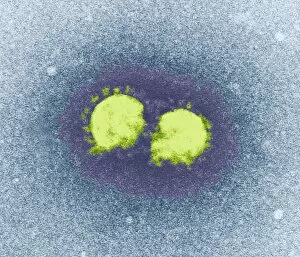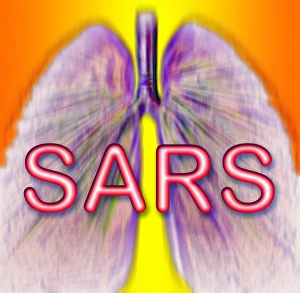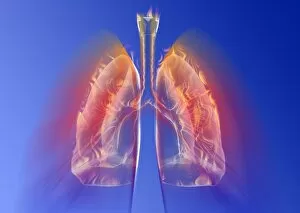Severe Acute Respiratory Collection
"Unveiling the Invisible Threat: Exploring Severe Acute Respiratory Syndrome" In this captivating image captured through a Transmission Electron Microscope (TEM
All Professionally Made to Order for Quick Shipping
"Unveiling the Invisible Threat: Exploring Severe Acute Respiratory Syndrome" In this captivating image captured through a Transmission Electron Microscope (TEM), we witness the haunting presence of Coronavirus particles, responsible for unleashing havoc on humanity. Among them, the notorious SARS virus stands out, its intricate structure revealed in astonishing detail. The TEM unveils the sinister nature of the SARS virus as it looms large with its characteristic crown-like spikes protruding from its surface. These menacing spikes enable it to latch onto human cells and initiate a severe acute respiratory syndrome (SARS) infection. As we delve deeper into this microscopic world, we encounter inflamed lungs—a chilling reminder of the devastation caused by SARS. The inflammation is a consequence of an aggressive immune response triggered by viral invasion, leading to compromised breathing and potential organ failure. To protect against such formidable adversaries, individuals don face masks specifically designed to shield against SARS transmission. These protective barriers act as vital defense mechanisms in preventing further spread and safeguarding public health. Through these powerful visual cues provided by TEM imaging techniques, scientists gain invaluable insights into understanding how viruses like SARS operate at their most fundamental level. This knowledge fuels ongoing research efforts aimed at developing effective treatments and vaccines that can combat these deadly pathogens head-on. While our battle against severe acute respiratory syndromes continues unabated, let us remain vigilant in adopting preventive measures and supporting scientific advancements that hold promise for a healthier future free from their grip.









